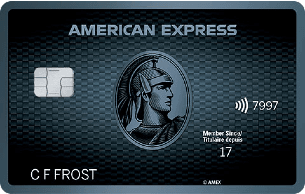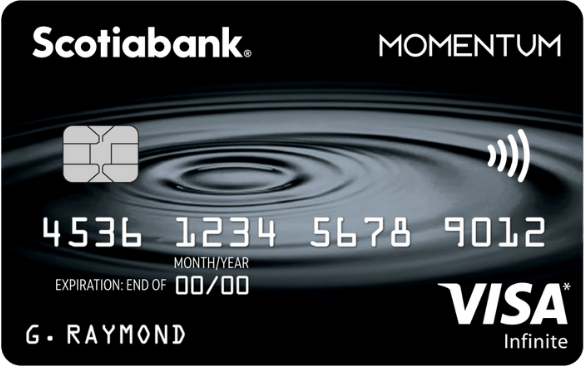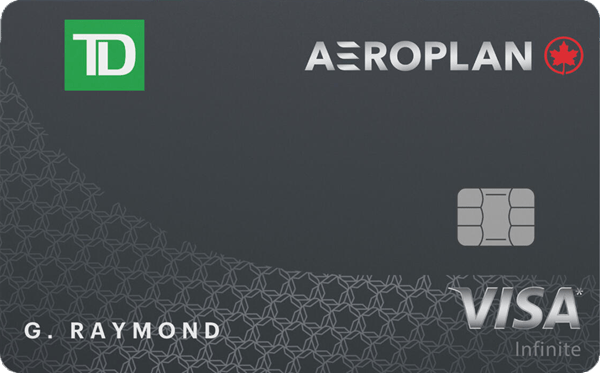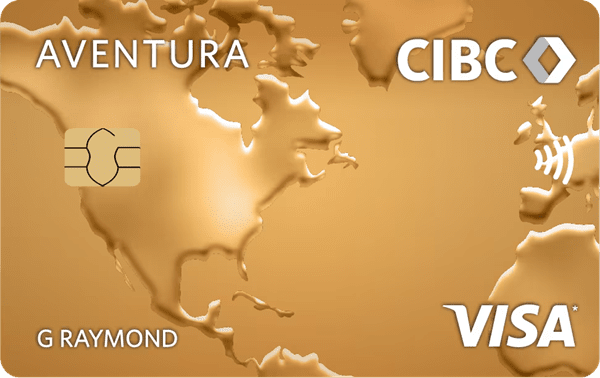Sort By
Rating
Purchase APR
Annual Fee
What matters to you?
I'm looking for:
There are no results matching your criteria.
Why you can trust our Canadian credit card comparison tool
Money.ca's team of credit card experts have reviewed and researched more than 100 of the best credit cards in Canada by analyzing over 50 independently-collected data points to determine the best cards by category by what's most important to you. These data points include: welcome bonus offers, cash-back rates, rewards, annual fees, interest rates, insurance, purchase protection, other benefits and more.
From this data, our algorithm gives each Canadian credit card a score out of 5 for a number of different factors: travel, cash-back, rewards, low or no annual fee, interest rates and many more. By adding in the credit card features and qualities most important to you—our credit card comparison tool will help choose the best credit card for your financial situation.
Compare Canadian credit cards by category
Your friends may want a travel credit card to book an upcoming vacation, while you'd rather earn cash back. Not to worry, there are hundreds of Canadian credit cards to serve each unique purpose. Here's what to look for in credit card categories.
Compare Canadian credit cards by networks
In Canada, we have three major credit card networks: Amex, Mastercard, and Visa. Each network has its own requirements from income to credit score and offer a variety of perks to match your dreams and desires.
Compare credit cards by bank
For some, they like to keep their credit card with their bank of choice. However, know that you don't have to and sometimes you're limiting yourself. For those that want the freedom to choose, we help our lists help you find the credit card that suits you best.
If you’re going to make the most of your credit cards, it’s important to understand the distinction between an issuer and a network. A credit card issuer is a financial institution (like a bank or credit union) that issues and manages your credit card. They approve or deny your application, establish a card’s earning rate and perks, and process your payments.
While there are hundreds of different issuers in Canada, there are only three main networks: Visa, Mastercard, and American Express. (Discover is also a network somewhat popular in the U.S., but few Canadian merchants accept their cards.) Networks set the fees that merchants pay for processing a credit card transaction. American Express is both an issuer and a network while Visa and Mastercard are networks only.
For a breakdown of the best of each network, check out our top credit card picks for Visa, Mastercard and American Express in Canada.
Choosing a credit card is a little like dating – it’s all about finding a perfect match.
The Canadian market is saturated with credit cards, each offering great deals and incentives for cardholders. Ultimately, you want to find “The One” that’s compatible with your lifestyle.
How can you be sure you’re choosing the right credit card? Before committing, here are our guidelines for finding the best credit card for you.
With a solid income (above $80,000 personal, $160,000 household) and high credit score (760+), you can apply and likely be approved for the most luxurious credit cards on offer (if you're ok with paying the higher annual fees).
But, some credit cards are there to help pay off debt (e.g. balance transfers), build credit (e.g. secured credit cards), or to get the most cash back from your purchases.
1. Check your credit score
Before you start comparing credit cards start by checking your credit score. Why? Because your number determines your eligibility to apply for certain credit cards. If you don’t meet the minimum credit score requirement, strike a prospective card from your list.
Generally speaking, credit scores in Canada vary from 300 to 900 and are calculated based on a range of factors. The higher your number, the more appealing your credit application. Here’s a quick overview of the credit scoring in Canada and how it could impact your credit card application:
- Excellent (741-900): The world is your oyster! Expect quick approval for your application, the lowest interest rates, high credit limits, and access to the best credit cards in Canada.
- Good (690-740): You’re still in the good books. You won’t have much trouble getting approved, and credit cards with low-interest rates, rewards, and excellent benefits are within reach.
- Fair/Average (660-689): You’ve got choices, but some premium credit cards offering rewards or other perks are likely off-limits until you improve your score. Look at the best credit cards for a fair credit score.
- Below Average (575-659): Your options are limited. You likely won’t be approved for credit cards with premium perks or lucrative rewards.
- Poor (0-574): If you fall into this category, most credit cards will be off-limits. Get back on track by applying for a secured or unsecured credit card for bad credit and paying your bill regularly and on-time.
Once you know your number, it will either shrink or widen the pool of credit cards that are available to you. If your score is poor or below average, consider it a wake-up call: apply for one of the best credit cards for bad credit in Canada and prioritize re-building your credit history.
2. Consider the amount of debt you're carrying
If you’re dealing with debt, a balance transfer credit card may be the best credit card for you. Because the introductory interest rate on balance transfers is so low, it buys you more time to pay down the principal and save a bundle on interest charges. A balance transfer credit card may be your best bet if:
- You’re carrying a balance on one or more credit cards;
- The interest rate on your current credit card is 18% or higher
- You’re not able to pay off your outstanding balance immediately
- You want to aggressively tackle your debt within the near future
There are plenty of excellent balance transfer credit cards in the Canadian market, but ideally, find one that offers both a low introductory interest rate (0% to 12.99%) and a long promotional period (9 months or more). It’s even better if the card has no annual fee and a low-interest rate after the promo expires just in case you’re still carrying a balance.
| Comparing Canadian credit card to a great balance transfer offer | Current card | MBNA True Line Mastercard (in promo period) |
|---|---|---|
| Outstanding balance | $5,000 | $5,000 |
| Interest rate | 19.99% | 0% for 12 months |
| Annual fee | $120 | $0 |
| Fixed payment to pay off card in 12 months | $463.15 | $416.67 |
| 1-year interest paid | $557.78 | $0 |
| Total cost to pay off balance (including annual fee) | $5,677.78 | $5,000 |
3. Examine your payment practices
Take a peek at your payment practices to help find a credit card that suits your budget. For instance, if you regularly pay your balance in full every month, a high-interest rate may be acceptable. But one of the best low-interest rate credit cards might be your best bet if:
- You tend to carry a balance
- You need flexibility on payments
- You plan on making a large purchase and want to spread your payments over several months
- You are motivated to pay off debt and minimize interest charges
If the above applies, seek a low-interest credit card offering a rock-bottom rate (below 18% APR) on new purchases, rather than the typical APR of 18% or higher. There are many options for a low-interest credit card: some cards offer ultra-low interest rates for a limited time (e.g. 6 months) but with no annual fee. Others might have an annual fee but boast a regular low-interest rate. There are even credit cards with variable interest rates tied to Canada’s prime rate. So how do you choose a low-interest credit card?
Comparison of the total cost of current credit card vs. low-interest rate card over 12 months
| Credit card comparisons - average card vs. low interest rate | Current card | MBNA True Line Gold Low interest card at 8.99% |
|---|---|---|
| Outstanding balance | $5,000 | $5,000 |
| Interest rate (% and $ monthly) | 19.99% | 8.99% |
| Annual fee | $0 | $39 |
| Average monthly payment (to clear balance in 12 months) | $463.15 | $437.23 |
| 1-year interest paid | $557.78 | $246.61 |
| Total cost to pay off balance (including annual fee) | $5,557.78 | $5,285.81 |
This table depicts how much a low-interest credit card can save you overall on interest. Although the “current card” doesn’t have an annual fee, the low-interest card saves you almost half the interest paid over the year, despite its annual fee (which is quite low considering.)
Use our credit card interest calculator below to better understand how a low-interest card can help you save. Put in the current balance you owe, the interest you’re paying on the balance and how you’d like to calculate your interest (by monthly payment or period of time). When you’ve finished, click “calculate” and see how much time or how much interest you’ll be paying (in cash).
4. Scrutinize your spending
Choosing the best Canadian credit card can be confusing, but studying your spending habits can help nail down what card will benefit you the most. Do you make frequent purchases at one particular retailer (like Costco, Loblaws, or Canadian Tire)? Is your credit card statement filled with flight, hotel, and other travel-related expenses? Or are the bucks going towards groceries and gas? There are credit cards that reward specific spending categories, so if you understand where your money is going, you could save (or even earn!) a bundle by putting the right card in your pocket.
Realistically, you probably won’t find one credit card that ranks #1 in every spending category, but you can cover all your bases by having more than one credit card in your wallet.
5. Consider the credit card’s value
If you’re struggling to choose between credit cards, take a step back and assess the card’s overall value. Here are some questions to ask:
What is the welcome bonus worth? Sign-up incentives – like bonus points, additional cash back, or a first-year annual fee waiver – certainly sweeten the pot. But it must be an incentive that you can actually use for it to have value. For instance, an Aeroplan credit card with bonus points is worthless if you’re not an Aeroplan member (or at least flying with Air Canada).
Is the annual fee justifiable? Rewards credit cards frequently charge an annual fee, typically ranging from $120 to as high as $699 (!). However, look for value: What’s the point-earning potential? Does the card include travel, new mobile device, or car rental insurance? Is there an annual fee rebate in the first year? These extras may cancel out the cost of an annual fee.
Are the perks worth it? Some premium cards come with high annual fees, but are the extra perks really worth the price? These little luxuries may include complimentary airline lounge access, enhanced hotel experiences, priority treatment on certain airlines, or access to exclusive entertainment events. These can add great value if you use them frequently, but if these perks don’t matter to you, you might want to consider getting a card with a lower annual fee.
So just make sure you do the math. Add up the actual cost of what a card is offering. For instance, what would travel medical insurance cost per year? What’s the running rate for mobile phone repairs? How much is an airline lounge membership? What’s a first-year annual fee waiver worth? Then, compare the value of the top credit cards you’re considering. The numbers don’t lie and can help you decide whether (and which) credit card is worth it.
Look before you leap! Get to know popular credit card categories in Canada:
Low-interest credit cards
A low-interest credit card offers a very low standard interest rate on new purchases (typically between 8.49% and 12.99%). The rate is not promotional and doesn’t expire. If you tend to carry a balance or need to spread out your payments over several months, a low-interest credit card is a smart way to minimize the amount of interest you’ll pay.
0% APR credit cards
These cards take low interest to another level. The 0% APR typically is not a permanent feature. Like many other credit card bonus offers, this is given for an introductory period, which could be anywhere from 3 to 12 months.
No-fee cards
It’s sometimes worth paying an annual fee for a credit card if the combined value of the card’s rewards and features outweigh the annual fee level. But no-annual-fee cards are an excellent option for those looking to keep expenses down any way they can. Though there are many attractive free rewards or cashback credit cards out there, they have lower earning power and less attractive features than their premium counterparts, however, the minimum credit score and income requirements are often correspondingly lower as well.
Balance transfer credit cards
Balance transfer credit cards let you transfer (usually for a small fee) some or all of your high-interest debt to a new card and enjoy a temporarily low interest rate on the transferred amount – typically between 0% to 12.99% for a span of 6 to 12 months. How it works: simply move your existing balance from a higher interest credit card to the new credit card with a lower interest rate.
Although a balance transfer can potentially save you a massive amount in interest payments, it’s not always a financially shrewd step in every circumstance, and you should weigh a number of important considerations before determining if a balance transfer is the right move for you.
Lifestyle rewards credit cards
A rewards credit card allows you to earn incentives for eligible purchases charged onto the card. Some cards are tied to one loyalty program (e.g. AIR MILES, Aeroplan, PC Optimum Points, Scotia Rewards, etc.), while others offer cash back, flight rewards, merchandise discounts, statement credits, free hotel stays, or other benefits. Some are even designed to remunerate specific spending categories – like groceries, gas, dining out, or travel. The pay-off is plenty!
Travel credit cards
Popular among frequent fliers, travel credit cards offer points or miles that can be redeemed for travel-related rewards like free flights, upgrades and hotel stays. They often feature perks that would especially appeal to globetrotters, such as premium travel insurance packages, airport lounge access and discounts on rental cars. The amount of the rewards generated by the card (the ‘earn rate’) can be a flat rate based on your overall spending or can vary depending on specific spending categories. For more, check out our best travel rewards programs guide.
Cash back credit cards
A cash back credit card is a type of rewards credit card that offers cash incentives. How it works: whenever you make an eligible purchase on your credit card, you earn a percentage back on the total purchase price – usually between 0.5% to 4%. Redemption is straightforward: cash back rewards are usually credited to your credit card statement on an annual or monthly basis. But some may allow you to deposit your cash back into your bank account. The best cash back credit cards also have lucrative welcome bonuses, offering limited time “cash back top-ups” as high as 10% for new cardholders.
No foreign transaction fee credit cards
Most Canadian credit card companies charge a 2.5% to 3% foreign transaction fee to purchases made outside the country. But some credit cards waive or offset foreign transaction fees – otherwise known as “no foreign transaction fee credit cards.” If you travel or make purchases abroad, a no foreign transaction fee credit card could save you money.
Student credit cards
A wonderful way to establish a credit score, student credit cards are designed specifically for university/college students who have no credit history and no regular income. They tend to have a low credit limit, less (but still attractive) reward-earning potential, an easy application process and no annual fee.
Business credit cards
Business credit cards focus on the specific needs of cardholders who run a company. Rather than offering rewards for spending on things like groceries or ride-share programs, they typically feature perks and up the earn rate of categories business owners can really use, like travel expenses, group cell phone plans, office supplies and internet use. Many have nice extras like zero-liability employee cards, longer interest-free grace periods and generous insurance packages.
Credit cards for bad credit
There are secured or unsecured credit cards that can help establish, re-establish, or repair your credit histories and/or scores. It’s usually easy to get approved, as the credit score required is usually quite low (0 to 659). While lacking all the frills of a premium card, you’ll get the convenience and security of using a credit card. Unlike regular credit cards (a.k.a unsecured cards), secured credit cards require that cardholders provide a cash deposit—of an equal or greater amount than their credit limit—to guarantee repayment of their balance. They are an ideal way for people with a poor credit score or no credit history to repair a record of heavy debt and credit mismanagement. For more, read our best credit cards for fair credit guide.
Prepaid cards
Prepaid cards are best when you don’t want to risk going into debt. You preload the card with the amount you wish to spend. The drawback is that a prepaid card does not have any impact on your credit score.
Secured cards
Secured cards are often issued to people with poor credit histories or have no credit whatsoever. Secured credit cards are backed by a cash deposit from the cardholder. But just like the regular credit cards, you have a monthly minimum payment and once you pay, your viable credit goes up again.
Credit cards come in different colours, interest rates and limits. There is the “Elite,” “Infinite,” “Platinum,” or “Black.” So how to choose? Here’s how to decide what should be in your wallet and how to choose your best credit card based on your financial needs. To read our data-selected list, check out our best credit cards in Canada guide.
1. Define your needs
First, you need to think about how you’ll use the card, and see where you stand. Do you need cash advances? Do you need to simply reduce the cost of your high-interest debt? Do the annual fees make up for the credit card's other key features?
2. Understand your credit card interest rates
For example, a secured credit card is pointless for someone with a high credit score, but it can be the perfect solution to build a good credit history.
Whenever you have a balance on your credit card, you will pay interest. For credit cards, you are charged the annual percentage rate (APR), which is the same as the interest rate when it comes to credit card debt. The lower the APR, the less interest you’ll pay on your balance.
APR typically ranges from 19.99% to 25.99%. The rate itself is dependent on market conditions, inflation, costs of long-term deposits, competition for funds, and Bank of Canada policy.
The APR rate won’t matter to you if you’re confident that you’ll pay off your balance in full every month. But if you expect to carry a balance regularly, it may be the number one thing you look at.
For example, if you have a $2,000 balance on a card with a 20% APR, you’d pay $400 in interest every year. On a card with a 16% APR, you’d pay $320.
Another note, you can find the APR range that credit cards can charge through the terms and conditions agreements on the carrier’s website, and you don’t need to apply for the card to see the terms.
You won’t know your individual APR until you complete a full application and get approved, as your credit rating plays a factor in the rate you qualify for.
3. Watch for fees
It isn’t only the APR that you have to worry about when getting a credit card. There are other fees that you need to be fully aware of. There are many fees, including but not limited to:
Annual fee: Some cards come with a fee you pay every year for the pleasure of owning and using the card. The annual fee can be worth it, if benefits like cash-back, balance it out.
Late fee: Depending on the lender, you may be charged a late fee, or charges for not making at least the minimum payment on time. Others charge this as a percentage of the amount you owe or just as a flat fee.
Balance transfer fee: Some cards will charge you this if you move your balance from one card to the other.
Foreign transaction fee: While you can use most credit cards overseas, some will charge you this fee for any transactions across the border.
Cash advance fee: Taking a cash advance (withdrawing cash from your credit limit) can sometimes charge a much higher fee than a regular transaction.
American Express Cobalt® Card

5.0
15,000 pts
Welcome offerFair
Suggested credit scoreEarn up to 15,000 Membership Rewards points
As our overall best credit card, the Amex Cobalt is one of the best credit cards for travel rewards in Canada and consistently awarded best Amex in Canada. Compared to other mid-tier travel cards, this option offers better value and versatility. From its high earn rate in everyday spending categories to its full suite of insurance offerings, this card is sure to be regularly used in your wallet.
Pros
-
High earn rates (up to 5% return on spending!)
-
Flexible month-by-month fee structure
-
Free supplementary cards
-
1:1 points transfer with selected hotels, airlines and frequent flyer programs
Cons
-
Accelerated earn rates only apply to purchases in Canada (not to purchases made abroad)
-
Amex has a more limited merchant acceptance rate than Visa and Mastercard
-
Slightly higher than average annual fee
Eligibility
Fair
Recommended Credit Score
$0
Required Annual Personal Income
$0
Required Annual Household Income
Recommended Credit Score
Fair
Required Annual Personal Income
$0
Required Annual Household Income
$0
5x
Earn 5 times the points on eligible eats and drinks in Canada, including groceries and food delivery. Spend cap applies.
3x
Earn 3 times the points on eligible streaming subscriptions in Canada.
2x
Get 2 times the points on eligible ride shares, transit & gas in Canada.
1x
Earn 1 additional point on eligible hotel and car rental bookings via American Express Travel Online
1x
Earn 1 point for every $1 in Card purchases everywhere else
$100 USD
Get up to $100 USD hotel credit to use on amenities when charged to the room for a stay of 2 or more consecutive nights through The Hotel Collection from American Express Travel.
Earn 5 times the points on eligible eats and drinks in Canada, including groceries and food delivery. Spend cap applies.
5x
Earn 3 times the points on eligible streaming subscriptions in Canada.
3x
Get 2 times the points on eligible ride shares, transit & gas in Canada.
2x
Earn 1 additional point on eligible hotel and car rental bookings via American Express Travel Online
1x
Earn 1 point for every $1 in Card purchases everywhere else
1x
Get up to $100 USD hotel credit to use on amenities when charged to the room for a stay of 2 or more consecutive nights through The Hotel Collection from American Express Travel.
$100 USD
21.99%
Purchase APR on purchases
21.99% - 2.75%
Cash Advance APR each
$155.88
Annual Fee 12.99/mo
2.50%
Foreign Transaction Fee
Purchase APR
21.99%
Cash Advance APR
21.99% - 2.75%
Annual Fee
$155.88
Foreign Transaction Fee
2.50%
As our overall best credit card, the Amex Cobalt is one of the best credit cards for travel rewards in Canada and consistently awarded best Amex in Canada. Compared to other mid-tier travel cards, this option offers better value and versatility. From its high earn rate in everyday spending categories to its full suite of insurance offerings, this card is sure to be regularly used in your wallet.
Pros
-
High earn rates (up to 5% return on spending!)
-
Flexible month-by-month fee structure
-
Free supplementary cards
-
1:1 points transfer with selected hotels, airlines and frequent flyer programs
Cons
-
Accelerated earn rates only apply to purchases in Canada (not to purchases made abroad)
-
Amex has a more limited merchant acceptance rate than Visa and Mastercard
-
Slightly higher than average annual fee
Eligibility
Fair
Recommended Credit Score
$0
Required Annual Personal Income
$0
Required Annual Household Income
Recommended Credit Score
Fair
Required Annual Personal Income
$0
Required Annual Household Income
$0
5x
Earn 5 times the points on eligible eats and drinks in Canada, including groceries and food delivery. Spend cap applies.
3x
Earn 3 times the points on eligible streaming subscriptions in Canada.
2x
Get 2 times the points on eligible ride shares, transit & gas in Canada.
1x
Earn 1 additional point on eligible hotel and car rental bookings via American Express Travel Online
1x
Earn 1 point for every $1 in Card purchases everywhere else
$100 USD
Get up to $100 USD hotel credit to use on amenities when charged to the room for a stay of 2 or more consecutive nights through The Hotel Collection from American Express Travel.
Earn 5 times the points on eligible eats and drinks in Canada, including groceries and food delivery. Spend cap applies.
5x
Earn 3 times the points on eligible streaming subscriptions in Canada.
3x
Get 2 times the points on eligible ride shares, transit & gas in Canada.
2x
Earn 1 additional point on eligible hotel and car rental bookings via American Express Travel Online
1x
Earn 1 point for every $1 in Card purchases everywhere else
1x
Get up to $100 USD hotel credit to use on amenities when charged to the room for a stay of 2 or more consecutive nights through The Hotel Collection from American Express Travel.
$100 USD
21.99%
Purchase APR on purchases
21.99% - 2.75%
Cash Advance APR each
$155.88
Annual Fee 12.99/mo
2.50%
Foreign Transaction Fee
Purchase APR
21.99%
Cash Advance APR
21.99% - 2.75%
Annual Fee
$155.88
Foreign Transaction Fee
2.50%
Other overall best credit cards in Canada
Scotiabank Momentum® Visa Infinite

Earn 10% cash back on all purchases for the first 3 months (up to $2,000 in total purchases). No annual fee in the first year, including on additional cards.
$120 Annual Fee
Excellent Recommended Credit Score
$60,000 Required Annual Personal Income
TD® Aeroplan® Visa Infinite* Card

Earn up to $1,000 in value† including up to 40,000 Aeroplan points†. Conditions Apply. Account must be approved by September 3, 2024.
$139 Annual Fee
Excellent Recommended Credit Score
$60,000 Required Annual Personal Income
CIBC Aventura® Gold Visa* Card

Join and get up to $1,400 in value including a first year annual fee rebate!†
$139 Annual Fee
Good Recommended Credit Score
To browse our full list of best Canadian credit cards for 2034 by category — along with their runners-up picks, read our best credit cards in Canada for 2024 guide.
The most popular credit cards will be different based on the category of the card, such as travel, cashback, low fees, etc. However, recent data from YouGov breaks down the most popular cards by payment network such as Visa and Mastercard. We’ve further split this data by age to help you make the best decision based on the popular fit for similar shoppers in your cohort.
In younger cohorts, like 18-24 and 25-35, it’s no surprise that Visa is the preferred card with 33% and 41% of the market share respectively, compared to Mastercard with 16% and 27% of the market for the same age groups. Oppositely, for older generations (55+), Mastercard owns more of the market with 37% over Visa with 33%. Overall across all ages, the two payment networks own similar shares of the market with Mastercard owning 33.44% and Visa owning 34.4%.
Credit card comparison FAQs
Last updated July 23, 2024

Dina Al-Shibeeb is an award-winning journalist with hyperlocal and international experience in various news formats. She began her reporting career covering the Arab Spring and its aftermath for a Dubai-based news station. She has since worked in Canadian media, covering municipal affairs in Vaughan, Ont., for Metroland Media. Her work has also appeared at the Toronto Star.

Lisa Jackson is a freelance personal finance and travel journalist, editor, and blogger who contributes to various online and print media outlets in Canada and abroad, including The Globe & Mail, Toronto Star, Islands Magazine, Fodors, BRIDES, Huffington Post Canada, CAA Magazine, The Food Network, West Jet Magazine, NUVO Magazine, and many others. When she's not writing from her home office, she's busy globe-trotting to new destinations in search of her next story.
Explore the latest articles

Learn to spend responsibly using your credit card
Credit cards can help you build smart financial habits, awareness of spending trends, and even encourage tracking of fraudulent transactions

Disclaimer
The content provided on Money.ca is information to help users become financially literate. It is neither tax nor legal advice, is not intended to be relied upon as a forecast, research or investment advice, and is not a recommendation, offer or solicitation to buy or sell any securities or to adopt any investment strategy. Tax, investment and all other decisions should be made, as appropriate, only with guidance from a qualified professional. We make no representation or warranty of any kind, either express or implied, with respect to the data provided, the timeliness thereof, the results to be obtained by the use thereof or any other matter. Advertisers are not responsible for the content of this site, including any editorials or reviews that may appear on this site. For complete and current information on any advertiser product, please visit their website.











-1721334758.png)
-1721334752.png)
-1721334739.png)







-1721335400.png)




